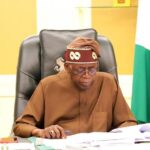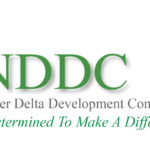Ewurum Jonas is the author of ‘Arts Social Control in the Nigerian Society: Traditional and Modern’.
Here, the retired Customs Officer, painter, art historian, poet, and actor talks about the value of art, its control, and more. Excerpts:
Your book, ‘Arts Social Control in the Nigerian Society: Traditional and Modern’ explores the influence and regulation of the society through arts, among others. What inspired this work?
I was inspired by the knowledge I acquired at my MA (Art History) Programme at the University of Lagos, specifically on a course titled Art and Society.
Good art is relative. You wrote about its positive influence on society and how it makes people adjust their behavior in conformity with its instruction, message or meaning without the use of force. Is it possible for art to have a negative influence? How can this be avoided?
Art can have a negative influence, particularly art that originates from evil background, or even satanic art, because in every art or artist there is a spiritual background.
- NSCIA research, innovation unit seeks partnership with Daily Trust
- Oga Smart Adeyemi, apply common law before Shari’ah
Chapter 4.3 of the book considers the role of art in various religions.
If one is properly guided in his religion, one can avoid the negative influence of some type of art forms.
Would you say art, particularly visual art, is being appreciated in Nigeria? How can this be encouraged?
The appreciation of visual art in Nigeria is low.
One of the causes is the neglect, none or partial patronage by the government.
Imagine the capital city of Nigeria, Abuja built since early 1980s and it has no National Gallery of Arts building, no national museum and monuments or concrete government art centres.
Yet their parastatals and agencies are loaded with staff and personnel of all ranks and files. Page 123 of the book captures ‘Arts as Tourism Landmarks’, a presentation by Prof. Ikenna Nzimiro, portraying how other nations value art.
This neglect of the visual art industry by the government also permeates the society at large.
Nigeria has diverse and rich cultures. How do you think this can be sufficiently tapped to enrich our art industry?
There must be a deliberate art policy that is implemented and sustained by the government.
The government at whatever level must be educated that art is the link between science and technology.
You cannot see any developed country that relegates art to the background. In fact, art is compulsory in all schools.
Some countries even have a whole university of arts and designs.
But here in Abuja we have very few Secondary schools offering arts.
No university offers Visual Arts, Fine or Applied Arts in Abuja.
You wrote that as time passed, the visual and performing arts became more politically provocative, with artists using their work to make statements or highlight certain issues. Then you explained that when, in 1947, the government created the post of art supervisor and Ben Enwonwu was appointed to the post, he “appeared not to have used his position to its fullest advantage to promote art education.” Would you say this is different with those in similar roles today?
The observation was made, as duly acknowledged by Professor Adamu Mbahi, in his book of 1999, ‘History of Classroom Art in Nigeria’.
Mbahi is currently a professor of Art Education in the University of Maiduguri.
He was also my supervisor during my first degree.
He observed that Prof. Ben Enwonwu was more successful in carrying out art commissions, as a studio artist of sculptor and painting, to the government that had international importance, than in the promotion of art education.
For those in similar roles today, art education is less attended to.
It is even worse now, because many of the DGs, directors or ministers are not graduates of any of the core art branches of Fine and Applied Arts or Performing Arts, rather, they are politicians who are appointed.
You are a retired Nigeria Customs Officer. How did your journey as a painter, poet and actor begin?
It all started in my primary school days, way back in 1965.
As talents given by God, I needed to activate them by relevant sessions of academic adventures.
Since I was not properly guided to pursue an art career early enough by my parents, the talent was seen as childish exuberance.
I was therefore only exposed to schools that had nothing to offer in arts.

After Secondary School, I was confronted with studying what was available to me.
I went to a monotechnic, in-service training Federal Treasury School, Yaba now Federal Treasury, Academy Orozo-Abuja, where I studied Accounting and Auditing.
Thereafter I was posted by the Accountant-General of the Federation, Federal Ministry of Finance, who was owner of the school, to Nigeria Customs Service as an auditor and stock verifier.
Before then I was practising art crudely, I sculpted and drew.
But while in the customs, I enrolled for a certificate in art in Yabatech.
Thereafter, I proceeded to University of Maiduguri, where I studied and obtained a BA in Creative Arts and majored in painting.
Before I retired from the customs I proceeded to University of Lagos, where I studied and obtained a master’s in Visual Art) with a major in Art History.
To be an art teacher, I proceeded to FCT College of Education, an affiliate to UNIMAID, and obtained a Post Graduate Diploma in Education.
This exposed me to acting, where Frank Idoko, who is now Professor/HOD in Theatre Arts at University of Jos, trained us in Theatre Arts.
Poetry was, however, provoked in my O’ and A’ Level GCE, Literature Classes.
You have participated in various art exhibitions where you displayed paintings, portraits and drawings. Which of your work would you say is most dear to you and what was it like working on it?
Every artist’s work is dear to him, just like one’s children.
But some energy, physical and spiritual, might be employed in certain commission that makes it worth remembering.
As a portraitist, I executed several portraits of notable personalities, like the life-size portrait of General Sanni Abacha, while I was in UNIMAID, which was part of my BA-Project.
It was outstanding to the point that the university presented it to his representative at the 1996 convocation ceremony.
Another was the canvas portrait of Samuel Afolayan, who was the Naval Head or Flag Officer at Ijora-Lagos.
I prophesized to the PA then, who took the portrait, that per adventure if he got promoted, they should return the portrait so that I can amend it to the new rank.
They never did but he was eventually promoted in a few weeks by President Obasanjo as the Chief of Naval Staff and Head of Nigerian Navy in 2000.
Different portrait techniques abound.
In two mentioned, I used the graph-scaling method to achieve the proportion, then with artist’s oil I made a study of their resemblance.
The former was on hard board, the latter was on rugged canvas that cannot be torn by hand.
What in your opinion is the ultimate purpose of art in any given society and how can it be developed to its full potential in a country like Nigeria?
The attrite purpose of art in any given society are many, as I highlighted in the book.
It is an environmental activity that beautifies the society, serves to document the history of the society in concrete visual forms and also as a tourist attraction.
In addition, it aids in healing sickness, for those in art-therapy, as can be seen in some private hospitals.
Art educates, generally, and provokes the cognitive realm of a student’s education.
It sustains a people’s culture and, in fact is the life wire or blood of the culture.
Also, in technology and science, no invention, production and manufacturing exist without a visual image done by an artist.
The link between science and technology is art.
The purpose can be developed to its full potential in a country like Nigeria, when the leadership draws up a functional art policy with the input and advice of relevant professionals and stakeholders who will implement it in all spheres of the society, federal, state, local government, private or public.
Art should be made compulsory in our educational institutions so that those who are talented will be discovered.
Then, the construction of public, national gallery and museums for exhibition, research and learning.

 Join Daily Trust WhatsApp Community For Quick Access To News and Happenings Around You.
Join Daily Trust WhatsApp Community For Quick Access To News and Happenings Around You.


